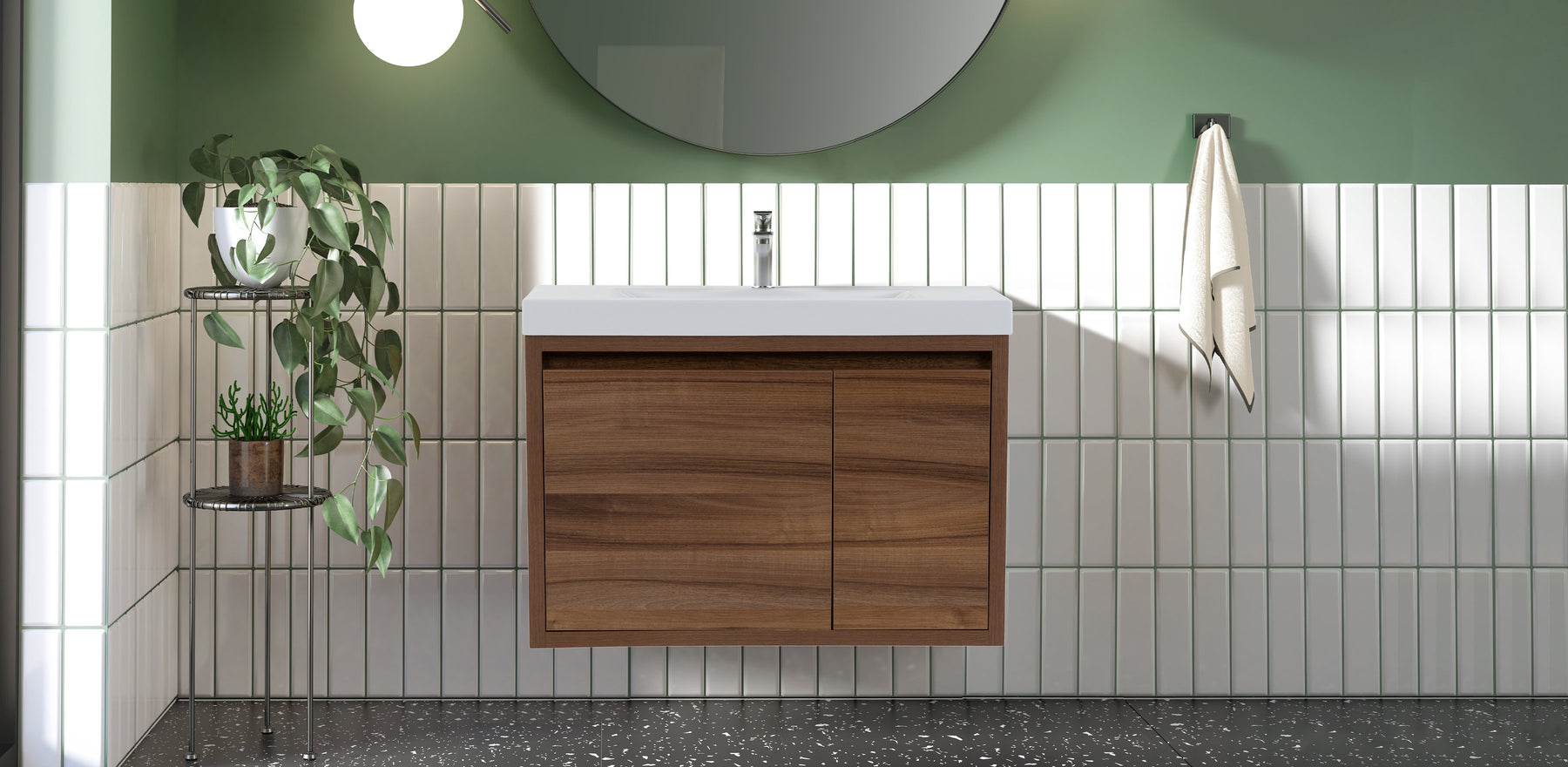
Vanity Dimensions: 5 Simple Steps to Find Your Size
Where do you start when shopping for a new vanity? Size, of course! You want your vanity to fit your space and be comfortable to use. Following these 5 steps will help you determine just the size you need:
1. Take a Good Look at Your Space
Before you start measuring, consider the visual aspects of your space. If your vanity is mismatched to your space, it can cause the entire room to feel disjointed. Selecting a vanity that accents the lines and shapes that are already at play in your bathroom will help you create a more comfortable, cohesive space. Consider these questions:
- Does your bathroom have an obvious shape to it? Is it narrow or wide?
- How does your current vanity relate to the other fixtures within your bathroom? Does it overwhelm the space, or is it overwhelmed by the space?
- Is there a fixture that calls more attention to itself than others?
Understanding your space is essential to keeping your vanity's visual weight proportional to your space. For example, a wall-mounted vanity can give the illusion of more overall space in a narrow room, while a larger double-sink vanity is more suited to an open space.
2. Get to Know Your Plumbing
Unless you plan to hire a contractor to reroute your plumbing, your new vanity needs to fit in the space surrounding those pipes. It should have an open area that allows unobstructed access to supply valves and fits around the supply pipes and hoses, without affecting regular operation.
3. Measure the Width
Grab your tape measure and measure the width (side-to-side) of your current vanity or the space you intend to use. Measuring the width is key to determining how much physical and visual space your vanity will take up in your bathroom. Keep in mind that vanity tops typically add ½ inch to 1 inch more on either side of the cabinet width.
Tip: Building codes often require at least 15” from the center of your toilet to any fixture. Check your local code to be sure your new vanity meets all requirements.
4. Measure the Depth
Measuring the depth (front to back) is especially important to finding a vanity that fits narrow bathrooms. You’ll want to take two depth measurements of your current vanity: one with the doors and drawers closed and one with them open. When determining available depth of your space, make sure to consider the following:
- The vanity should not obstruct entryways or shower doors
- The vanity drawers and doors should be easy to open and close
- The toilet, tub, and shower should be easily accessible
- Drawer pulls and knobs should not obstruct anything
5. Measure the Height
It’s important to choose a height that you and your family are comfortable using. You don’t want your vanity to be too high or too low. Traditional vanity heights in older homes range from 30 to 32 inches from the floor, but the modern trend is toward higher vanities up to about 36 inches (the standard height of kitchen cabinets).
- Is your current vanity too high or too low?
- Are there any existing features (mirrors, medicine cabinets, electrical switches or outlets) that would be impacted by raising or lowering your vanity's height?
Now that you know what size vanity you need, it’s time to figure out your style.
